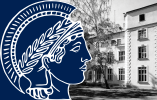Joas, Christian: The Advent of Quantum Field Theoretical Methods in Solid State Physics
The Advent of Quantum Field Theoretical Methods in Solid State Physics
When in 1957, as a side-product of their consulting work on thermonuclear fusion, Murray Gell-Mann and Keith A. Brueckner published their calculation of the ground-state energy of the interacting electron gas in the high-density limit — arguably the first systematic application of Feynman diagrammatic methods to the solid state — they built on knowledge of and previous training in nuclear many-body theory and quantum electrodynamics. Little did they foresee the imminent burst of activity in the field of solid state physics, entailing the successful application of field-theoretic many-body techniques to a plethora of previously unsolved problems. During the late 1950s and early 1960s, solid state theory was reshaped, following a novel and unified viewpoint toward the many-body problem in solids built on the understanding of the emergence as well as the interrelationship of quasi-particle and collective excitations in correlated systems, thus providing the firm ground for the extremely fertile development of the discipline until today. Astonishingly, the field-theoretic methods enabling this reorientation of solid state theory were firmly established in renormalized quantum electrodynamics already by the early 1950s. Their application to the solid state was considerably delayed and started to blossom only after the seminal paper by Gell-Mann and Brueckner. Why did this happen? I argue that there are two reasons for this delay. First are the technical difficulties stemming from divergences within the first terms of the perturbation series in almost all problems of interest, requiring the invention of sophisticated computational schemes. Second, also external factors were to prevent the quick adoption of quantum field theoretic methods. During the War, solid state physics was in a state of quasi-hibernation, as many physicists originally working in the field joined war-related projects, rarely connected to solid state physics. In many scientific biographies, the War triggered a shift of attention towards nuclear physics and related areas. Only slowly did the field of solid state physics regain momentum after the War, being hindered further by Cold War and McCarthyism. I will show that the relative stagnation of postwar solid state theory with respect to many of its fundamental problems was resolved by knowledge transfer from a different area of theoretical physics. Ironically, some concepts emerging from the quantum field theory of solids later were able to crossfertilize again the fields from which it had drawn its original inspiration.






 Joas (Presentation)
Joas (Presentation)